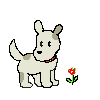
Chinese Drug Therapy
Chinese Herbal Medicine
is actually called Chinese Drug Therapy in China because it uses a wide variety
of substances and therapeutic modalities. Plant, animal and mineral substances
are all included in the Materia Medica of Chinese Drug Therapy. The earliest uses
date back at least 4,000 years to the Shang dynasty. Characters representing medicinal
substances have been found carved into oracular bone fragments. These were used
diagnostically by the Wu Shaman of this time.
The earliest materia Medica,
the Sheng Nung Peng Tsao, recorded over 10,000 medicinal substances. While there
seems to be an almost unlimited amount of medicinal substances, the most commonly
used number around 200 with some used only on rare occasions.
There have been
a number of different schools of thought in the history of Chinese Herbal Medicine.
Paul Unschuld, in his book "Chinese Medicine: A History of Ideas" states
that Chinese Herbal Medicine was closely associated with and heavily influenced
by the Taoist tradition, while acupuncture was more closely aligned with the Confucian
tradition. This was probably due to Taoist explorations in the use of herbal and
mineral substances in the search for immortality. Some of the different schools
of thought include the school of febrile disease, the school of cold disease,
the school of purgation, the school of spleen-stomach, and the school of kidney
tonification. They have all contributed both theories and formulas that make up
the current styles of use that are popular today.
Chinese medicinal substances
are commonly used in combinations called formulas. There are few circumstances
in which single herbs are used. This is because formulas are designed to address
the combination of symptoms that a person presents for treatment.
The single
herbs in the Materia Medica are arranged in categories that reflect their major
therapeutic effect. These categories may be additionally subdivided to give greater
precision in use.
The major categories in common use are:
* herbs that
release the exterior
* herbs that clear heat
* downward draining herbs
* herbs that drain dampness
* herbs that dispel wind-dampness
* herbs
that transform phlegm and stop coughing
* aromatic herbs that transform dampness
* herbs that relieve food stagnation
* herbs that regulate the qi
*
herbs that regulate the blood
* herbs that warm the interior and expel cold
* tonifying herbs
* herbs that stabilize and bind
* substances that
calm the spirit
* aromatic substances that open the orifices
* substances
that extinguish wind and stop tremors
* herbs that expel parasites
* substances
for external application
The commonly used formulas are also arranged in these
same categories with corresponding subdivisions.
Treatment with Chinese drug
therapy is done by utilizing the basic theories of Traditional Chinese Medicine
(TCM) that are also used by acupuncture and Tuina therapy. The practitioner questions
the person about their symptoms and then examines their tongue, palpates their
pulse and body, carefully observes any distinguishing characteristics of their
coloring, smell, voice, posture, movement or skin. The information acquired from
this process is then arranged in a sequential causal pattern to arrive at a diagnosis
of the person's condition. Then a specific formula is selected from the most common
traditional formulas. This formula may then be modified through the addition or
subtraction of substances or dosages. This is done to arrive at a very specific
formula for the person's specific symptom pattern. This formula can be administered
in the form of a decoction, infusion, tincture, powder, pill, plaster, poultice,
bolus, draft or capsule. Many of the traditional formulas are available in tincture,
pill, powder or capsule form from commercial herb companies. Raw herbs, or unprepared
herbs, can be purchased from a practitioner or at a Chinese Herbal Pharmacy.
Chinese
Drug Therapy can be used for:
" colds, flus, sore throats, cough
"
sinus congestion
" digestive disorders
" infertility
"
impotence
" male and female reproductive disorders
" musculoskeletal
pain
" headaches
" rashes, acne
" chronic fatigue,
immune system disorders